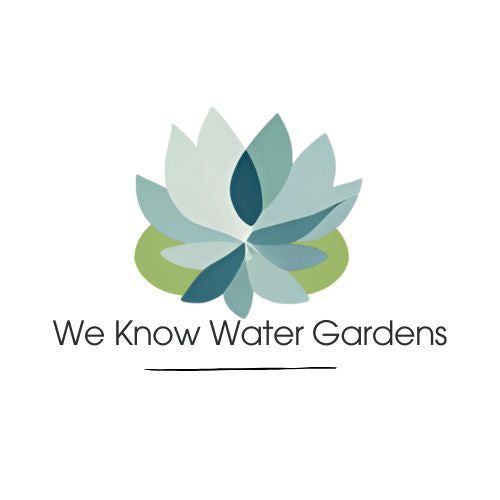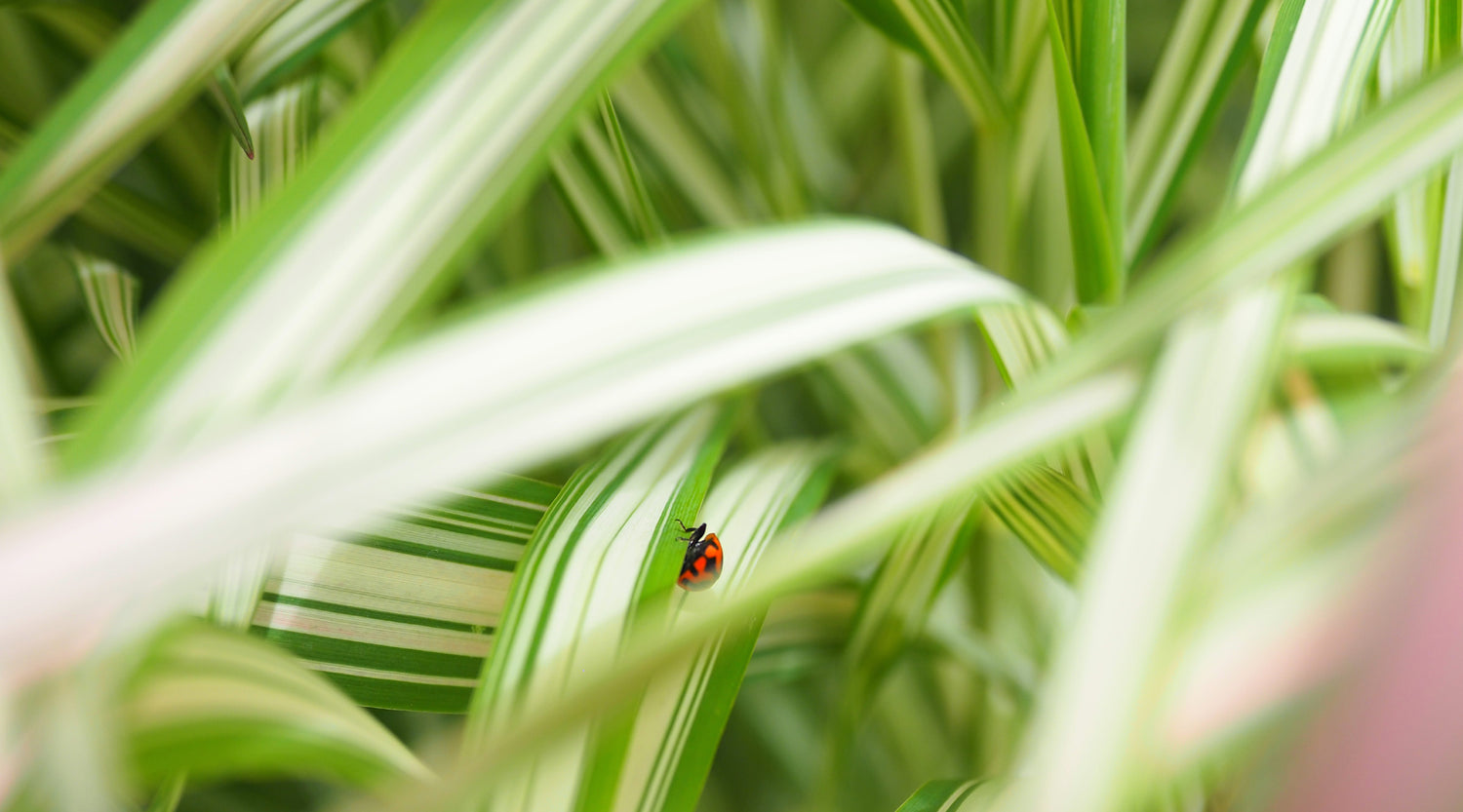How to Grow Swamp Pepper (Houttuynia cordata) in Your Pond
on Dec 17, 2024

With its heart-shaped leaves and colourful variegation, swamp pepper is a unique and eye-catching addition to any Aussie pond. It thrives in moist soil and loves full sun to partial shade, making it perfect for pond margins or water features.
Swamp pepper brings more than just aesthetics - it is also appreciated for its medicinal properties. Used in traditional Chinese medicine for centuries, the leaves of this plant are known to have antimicrobial, antiviral, and anti-inflammatory properties.
Whether you're a gardening enthusiast or someone who loves exploring the world of medicinal plants, this comprehensive guide will provide you with all the necessary information to successfully grow swamp pepper in your pond. Get ready to transform your outdoor space into a vibrant oasis of beauty and wellness with this unique plant.
Benefits of Growing Swamp Pepper in Your Pond
Growing swamp pepper, or Houttuynia cordata, in your pond offers a plethora of benefits that extend beyond mere aesthetics. One of the primary advantages is its ability to enhance the overall biodiversity of your aquatic ecosystem. By introducing this perennial herb, you create a habitat that attracts various beneficial insects, birds, and other wildlife. These organisms contribute to the ecological balance, aiding in pollination and pest control, thereby enriching the environment of your pond. Additionally, the vibrant foliage and colorful flowers of swamp pepper can turn a dull pond edge into a lively and visually appealing landscape.
Another significant benefit lies in the plant's medicinal properties. Swamp pepper has beenused in traditional medicine for centuries, particularly in Asian cultures. The leaves contain compounds known for their antimicrobial, antiviral, and anti-inflammatory effects. These properties make swamp pepper not only a beautiful addition to your garden but also a valuable resource for home remedies. For those interested in herbal medicine, cultivating swamp pepper offers a sustainable way to access these health benefits right from your backyard pond.
Moreover, swamp pepper acts as a natural water purifier. The roots of the plant absorb excess nutrients and pollutants from the water, helping to maintain a healthier pond ecosystem. By reducing nutrient levels, swamp pepper can mitigate issues such as algae blooms, which often arise from over-feeding and can harm aquatic life. This plant’s ability to thrive in wet conditions makes it a perfect choice for thos boggy pond edges, where it can effectively filter water while providing visual interest and a lush backdrop for other aquatic plants.
Choosing the Right Location for Growing Swamp Pepper
Selecting the best position for swamp pepper is easy! This pond plant plant thrives in areas that receive full sun to partial shade, so scouting a spot that offers the right balance of light is key. Ideally, aim for a location along the pond's edge where the plant can soak up sunlight during the day but also enjoy some relief from the harsh afternoon sun. Too much shade can hinder its growth, while excessive direct sunlight can cause the leaves to scorch, so finding that perfect equilibrium is key.
Another factor to consider is the moisture level of the soil. Swamp pepper prefers consistently moist, well-draining soil rich in organic matter. Areas that naturally collect water or are frequently splashed by the pond's waves are excellent choices. However, if your area tends to dry out quickly, consider creating a small depression or berm to help retain moisture for the plant.
We recommend growing it in the floating pond ring. This allows it to grow anywhere in your pond, regardless of depth.
Swamp pepper can grow quite vigorously, so it is wise to plant it in a space where it can spread without overwhelming other plants. Additionally, think about accessibility for maintenance and harvesting; having your swamp pepper within easy reach will make caring for and using this plant far more convenient.
Preparing the Pond for Growing Swamp Pepper
Before planting swamp pepper, it's essential to prepare your pond environment to ensure optimal growth. Start by assessing the existing conditions of your pond. Check the water quality, depth, and surrounding vegetation. If your pond is too deep or murky, consider using a shallow planting area to give the swamp pepper better access to light and nutrients. Clear any debris or invasive plants from the area where you plan to introduce swamp pepper, as they may compete for resources and hinder its growth.
Lastly, consider creating a designated planting area if your pond's edge is uneven or rocky. You can build a small raised bed using stones or logs to form a defined space for swamp pepper. This not only aids in soil retention but also provides a visually appealing border for your pond. Alternatively, you can grow Swamp Pepper quite easily in the floating pond ring.
Taking Care of Swamp Pepper Plants
Caring for swamp pepper plants is relatively straightforward, making them an excellent choice for both novice and experienced gardeners. R
Your Swamp Pepper will benefit from a regular feed every month during the growing season, especially if grown in the pot. Always follow the recommended feeding directions to prevent over feeding which can lead to alage growth.
Additionally, regular pruning can help maintain the health and appearance of Swamp Pepper. This plant can spread rapidly, so periodic trimming may be necessary to prevent it from overtaking other plants in your pond. Removing any dead or yellowing leaves can also improve air circulation and reduce the risk of disease. Keep an eye out for any signs of pests or disease, and address these issues promptly to ensure your swamp pepper continues to flourish in its aquatic habitat.
Harvesting and Using Swamp Pepper
Harvesting swamp pepper is a rewarding process that allows you to use its various medicinal and culinary properties. The best time to harvest the leaves is during the growing season when they are young and tender, typically in late spring to early summer. Gently pick the leaves by hand, ensuring you do not damage the plant. Early morning, after the dew has dried, is an ideal time for harvesting, as this can preserve the plant's essential oils and flavours.
Swamp pepper leaves can be used fresh in salads, sandwiches, or as a garnish due to their unique flavour profile. Additionally, the leaves can be dried and used for teas or herbal infusions, providing you with a natural remedy for various ailments. The plant is known for its antimicrobial and anti-inflammatory properties, making it a great addition to your herbal medicine cabinet.
Beyond culinary uses, Swamp Pepper can also be incorporated into topical applications. The leaves can be crushed and used to create poultices for minor wounds or skin irritations, taking advantage of their natural healing properties. However, it is essential to perform a patch test before applying any plant material to the skin to avoid allergic reactions.
Dealing with Common Issues and Pests in Swamp Pepper Cultivation
 While Swamp Pepper is generally a hardy plant, it can encounter a few common issues that gardeners should be aware of. One frequent problem is leaf discolouration, which can be caused by nutrient deficiencies or environmental stress. If the leaves appear yellow, it may indicate a lack of nitrogen or other essential nutrients. In this case, consider enriching the soil with organic matter or a balanced feed to restore health. Conversely, if the leaves are browning, it may be receiving too much afternoon sun.
While Swamp Pepper is generally a hardy plant, it can encounter a few common issues that gardeners should be aware of. One frequent problem is leaf discolouration, which can be caused by nutrient deficiencies or environmental stress. If the leaves appear yellow, it may indicate a lack of nitrogen or other essential nutrients. In this case, consider enriching the soil with organic matter or a balanced feed to restore health. Conversely, if the leaves are browning, it may be receiving too much afternoon sun.
Pests can also pose a challenge when cultivating swamp pepper. Snails and slugs are among the pests that may target this plant. Regularly inspect your swamp pepper for any signs of infestation, such as curled leaves or visible insects. If you do encounter pests, consider using snail pellets to manage.
Swamp Pepper: A Medicinal Marvel Across Cultures
Swamp Pepper, a versatile plant, has been valued for its medicinal properties in various cultures for centuries.
various cultures for centuries.
- China: Traditionally used as a wash to soothe rashes and as an internal remedy for respiratory issues.
- Japan: Applied to insect bites and chronic earaches, and enjoyed as a tonic tea to promote overall well-being.
- Vietnam: Consumed for relief from hemorrhoids and stomach cramps.
Modern research highlights even more potential benefits. Studies suggest that a chemical component of Swamp Pepper might support weight loss efforts, while quercetin, a flavonoid in the leaves, shows promising antiviral properties.
This fascinating plant bridges traditional wisdom and modern science, making it a valuable addition to natural medicine.
Frequently Asked Questions about Growing Swamp Pepper
Do I need to prune Swamp Pepper?
If your growing conditions have seen your Swamp Pepper take off, you can trim it back as required to maintain a neat form. By harvesting the leaves on a regular basis, this should be enough to maintain excessive growth.
Can I Grow it in Colder Regiond of Australia?
Yes, it will dieback over winter, only to regrow in spring.
What Parts of the Plant are Edible?
The leaves are edible and can be used fresh or dried in various dishes. They add a unique flavour to salads and can be brewed into herbal teas with potential health benefits. However, it's important to consume swamp pepper in moderation and consult healthcare providers if you're considering it for medicinal purposes.
Leaves can also be dried in a dehydrator and used as a tonic tea.
What Does Swamp Pepper Taste Like?
This depends on personal taste and preference! Some describe it as having a mild fish taste, others more often describe it as having a minty flavour, similar to that of Vietnames Water Mint. It offers a fresh, summery element to dishes and is popular in Asian dishes.
Growing Swamp Pepper in your pond is a great choice as it offers numerous benefits, from enhancing biodiversity to providing culinary and medicinal uses. By selecting the right location, preparing the pond environment, and providing proper care, you can successfully cultivate this unique and versatile plant.
© weknowwatergardens 2024
Share

